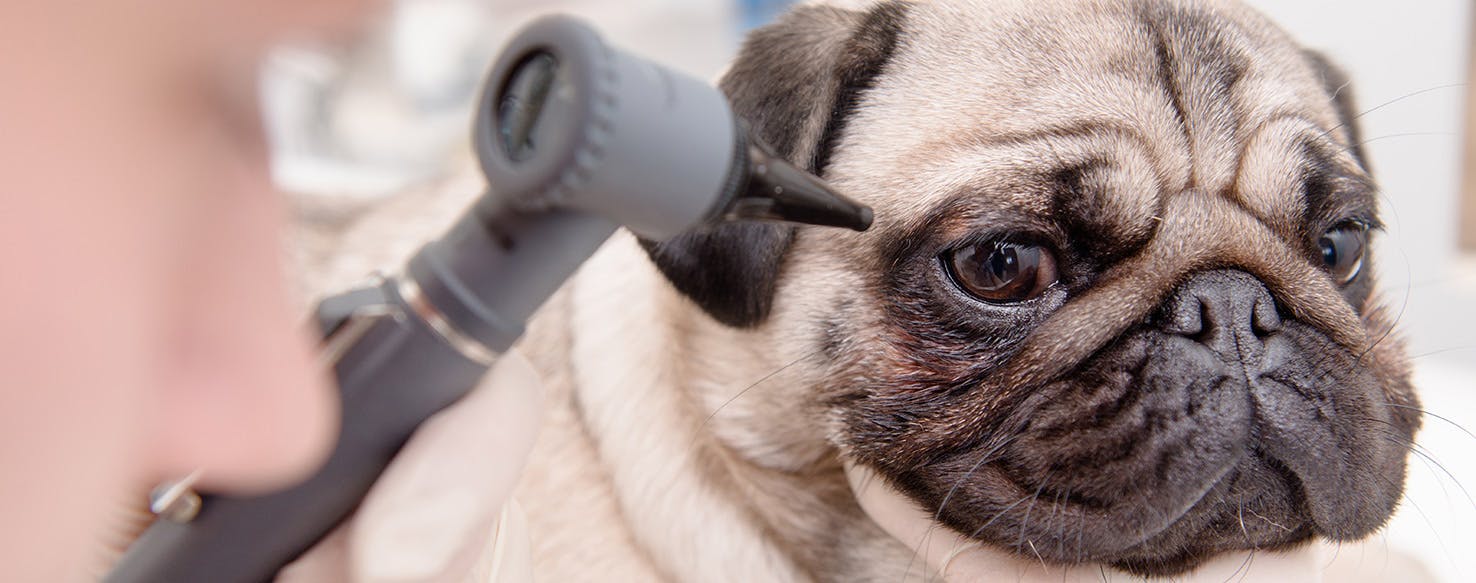Your vet just told you your dog needs to have gonioscopy and you have no idea what on earth this is, but it doesn't sound very good. The technical description sounds almost as scary, "gonioscopy is the examination of the iridocorneal angle of the eye in dogs and other animals." In simpler language, the vet is measuring the angle where the cornea of your dog's eye meets the sclera, or white outer layer of his eyeball.
This is the point in his eye at which the liquid in his eye (aqueous humor) drains out of the front chamber. As is flows out, this liquid helps keep the lens and cornea lubricated while maintaining the necessary balance of ocular pressure as fresh fluid comes in. If the rate of drain is slower than the rate of fill, it can lead to glaucoma. Maintaining the right pressure in his eyeballs is vital to his vision as too much pressure can lead to optic nerve damage and potential loss of vision in the affected eye.
What is Glaucoma?
Most of us have heard about glaucoma and may even know a few people who have been treated for it. Many dog breeds are subject to what is known as "primary glaucoma" which is inherent in their breeds. Others fall prey to "secondary glaucoma" which is often caused by a variety of other eye diseases that are known to reduce the speed of drainage from the eye.
Among the most common breeds affected by inherited glaucoma are:
There are also several other breeds that experts believe may also be subject to inherited glaucoma:
Border Collie
Dandie Dinmont Terrier
Great Dane
Hungarian Vizsla
Leonberger
Retriever (Golden)
Welsh Terrier
While these are the breeds most commonly affected by glaucoma and those who are likely to undergo gonioscopy, all dogs are at risk of this eye disease and should be checked. This should be done anytime you see a change in your dog's eyes or your vet recommends it. These changes include cloudiness, red-eye, loss of vision, or a dilated pupil. If you notice any of these signs, be sure to contact your vet and arrange for him to examine your pup's eyes.
How Does the Vet Do the Gonioscopy?
You might think that with such an odd name, gonioscopy would be a long and painful procedure. But, thankfully it is quick and painless. The vet starts by applying a local anesthetic to the eye being examined, or both to make sure he does both. He then uses a special type of magnifying lens and lamp to look at the surface of the cornea. The vet is specifically looking at the eye ball to observe the drainage angle. Depending on your dog, he may need to be sedated before the gonioscopy can be performed both for his safety and that of your vet.
After the Gonioscopy
Once the vet has completed the gonioscopy he will be able to determine if the drainage angle is correct and your pup's eyes are draining properly. If so, he may recommend a follow-up visit or tell when you should consider starting routine eye exams for your pup. If he does find something, your vet may be able to recommend treatment or provide you with options to help you and your dog learn to adapt to his vision as it begins to fade.


